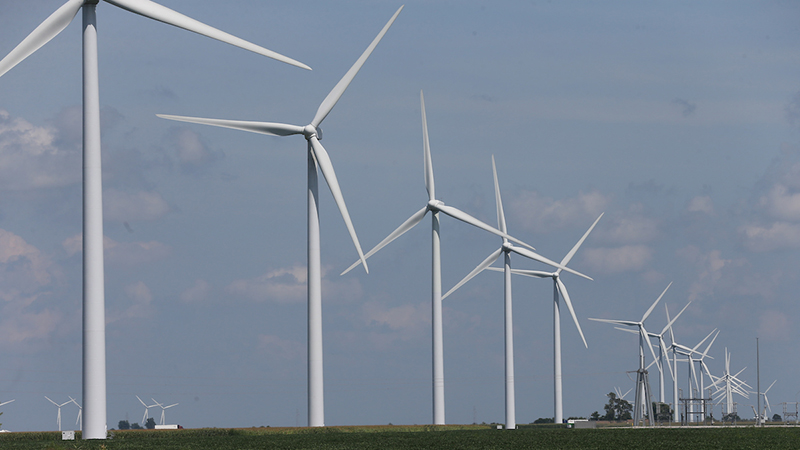Purdue Publishes Reports Exploring Land-Use Regulations for Renewable Energy

Purdue Extension’s Land Use Team collaborated with the Indiana Office of Energy Development to publish two renewable energy reports to help aid in the discussion of renewable energy land-use regulations.
In spring 2022, the Indiana General Assembly passed Senate Bill 411, creating voluntary commercial solar and wind regulation standards. Indiana communities planning to qualify as a solar or wind energy ready community will need to examine their county ordinances in comparison with the Indiana state voluntary standards.
Purdue Extension’s Land Use Team, in collaboration with the Indiana Office of Energy Development, recently published two renewable energy reports to help aid in the discussion of renewable energy land-use regulations.
The studies compared the voluntary state standards to current Indiana county zoning ordinances using data from the Indiana Renewable Energy Community Planning Survey and Ordinance Inventory Summary, which was completed by the Land Use Team in 2021. The analysis did not include counties without planning and zoning or zoning standards specific to commercial solar or wind development.
The study found 54 counties with commercial solar energy defined as a use in their zoning ordinance. None of the counties comply with all 11 categories outlined in the updated Indiana legislation. A total of 52 counties defined commercial wind energy as a use in their zoning ordinance with two counties complying with all nine categories set forth in the legislation.
“Planning and zoning regulations often reflect the local communities’ characteristics, resources and considerations. These reports reflect that in the myriad ways counties have chosen to regulate commercial wind and solar developments,” said Tamara Ogle, community development regional educator for Purdue Extension and member of the Land Use Team.
The two reports are available online. The Purdue Extension Land Use Team provides research-based resources and educational programs for Extension professionals, government officials, citizen planners and residents on land-use issues affecting their communities.
